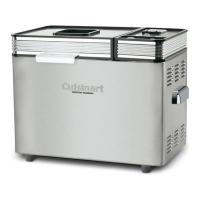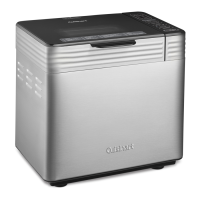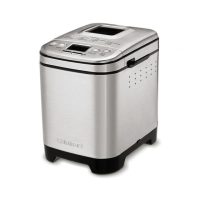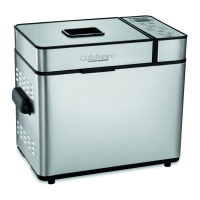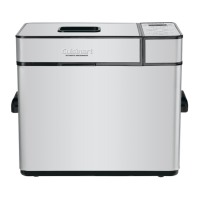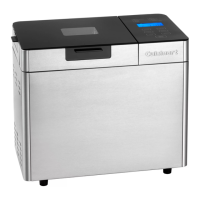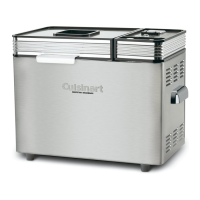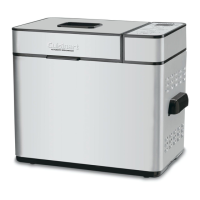13
MEASURING INGREDIENTS
Important note: The most important rule of making bread:
Use exact measurements. This is the key to successful bread
baking.
With wet ingredients, use only liquid measuring cups with the cups/
ounces marked clearly on the side. After lling the measuring cup,
place it on a at surface and view it at eye level to make sure the
amount of liquid is exact. Liquids must be room temperature.
With dry ingredients ll a dry measuring cup with a spoon and then
level off the measurement with the back of a knife or a spatula to
make sure the measurement is exact. Never use the cup to scoop the
ingredients directly from container (for example, our). By scooping,
you could add up to one tablespoon of extra ingredients. Do not pack
down.
LOADING INGREDIENTS INTO THE BREAD PAN
Important Note: The SECOND most important rule of making
bread: Put the ingredients into the bread maker in the EXACT
order given in the recipe. This means:
— FIRST, liquid ingredients – room temperature
— SECOND, dry ingredients
— LAST, yeast – Yeast must be separate from wet ingredients. Cre
-
ate a small crater in dry ingredients using your nger or a spoon, and
place yeast within the crater. Make sure yeast is fresh.
Also, make sure ALL ingredients are at room temperature, unless
otherwise noted [that is, between 75˚–90˚F (24 – 32˚C)]. Temperatures
too cool or too warm can affect the way the bread rises and bakes.
Note: Water should not be warm, or it will affect rising.
Last, it’s a good idea to start with fresh ingredients. Fresh our and
fresh yeast are critical.
See troubleshooting section (pages 16–17) to learn more.
MEASUREMENT/CONVERSION CHART
1 ½ teaspoons = ½ tablespoon 8 tablespoons = ½ cup
3 teaspoons = 1 tablespoon 12 tablespoons = ¾ cup
½ tablespoon = 1 ½ teaspoons 16 tablespoons = 1 cup
2 tablespoons =
1
⁄8 cup
3
/8 tablespoons = ¼ cup + 2 tablespoons
4 tablespoons = ¼ cup 8 tablespoons = ½ cup + 2 tablespoons
5 tablespoons + 1 teaspoon =
1
/3 cup 8 tablespoons = ¾ cup + 2 tablespoons
CLEANING INSTRUCTIONS
Caution: Do not put the bread maker in water or in a dishwasher. Do
not use benzene, scrubbing brushes or chemical cleaners, as these
will damage the machine. Use only a mild, nonabrasive cleanser to
clean the outside of the bread maker.
Baking pan and kneading paddle – Pan and kneading blade are fully
immersible and dishwasher safe. Do not use metal utensils with the
baking pans as they will damage the nonstick surface.
Baking chamber – Remove all bread crumbs by wiping them away
with a slightly damp cloth or clean pastry brush. DO NOT bend the
heating element, which is located on the inside of the bread maker.
Unplug machine before cleaning.
Lid – Wipe inside of lid with sponge or damp cloth. Lid should not be
immersed in water.
Outer Housing –
Use only a mild, nonabrasive cleanser to clean the
outside of the bread maker.
Control Panel – Wipe with a slightly damp cloth as necessary. Take
care not to allow water or cleaning uids under buttons of control
panel.
Yeast/Baking Powder or
Baking Soda
Dry Ingredients
Water or Liquids
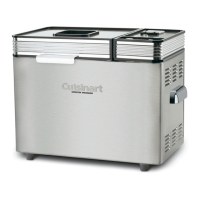
